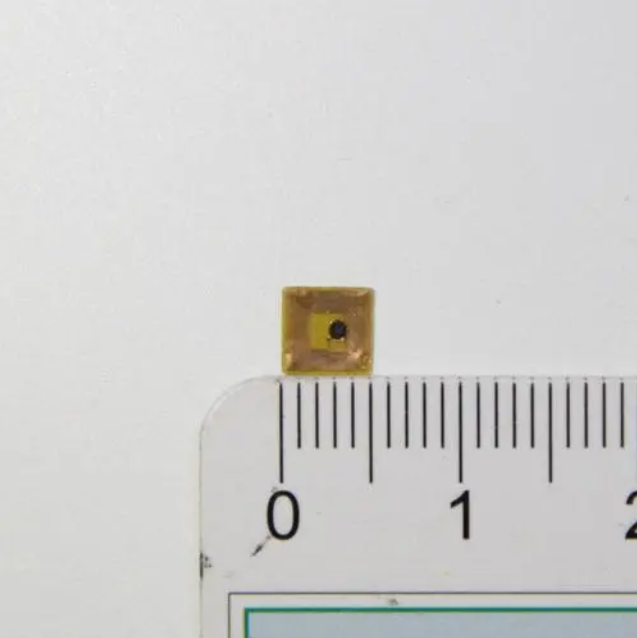מבוא

זיהוי בתדר רדיו (RFID) הטכנולוגיה חוללה מהפכה בתעשיות שונות בכך שאפשרה זיהוי ומעקב אלחוטיים אחר אובייקטים. Among the most significant advancements in this field is the development of the smallest RFID chips. These miniature marvels of technology offer unprecedented potential for applications in healthcare, לוגיסטיקה, אבטחה, ומעבר לו. This article explores the evolution, capabilities, and impact of the smallest RFID chips in the modern world.
The Evolution of RFID Technology
RFID technology has its roots in World War II, where it was initially used for friend-or-foe identification systems in military aircraft. Over the decades, RFID technology has evolved significantly, becoming more compact, efficient, and versatile. The latest breakthrough in this evolution is the development of ultra-small RFID chips, which are a testament to the advancements in microelectronics and nanotechnology.
Early RFID Systems
The earliest RFID systems were bulky and limited in their application due to their size and power requirements. These systems used large antennas and required substantial power sources, restricting their use to specific high-value applications such as asset tracking and inventory management in large warehouses.
Miniaturization and Modern Advances
The continuous drive for miniaturization has led to the creation of RFID chips that are smaller than a grain of rice. The smallest RFID chips today measure just 0.3 מ"מ x 0.3 מ מ, about the size of a speck of dust. These chips, developed by companies such as Hitachi, represent the cutting edge of RFID technology, featuring advanced capabilities while maintaining a minimal footprint.
Capabilities of the Smallest RFID Chips
Despite their diminutive size, the smallest RFID chips pack a powerful punch in terms of functionality. These chips can store data, transmit information wirelessly, and even integrate with sensors to monitor environmental conditions. Key capabilities include:
Data Storage and Transmission
Even the tiniest RFID chips can store unique identification numbers and other relevant data. They communicate this information wirelessly to RFID readers, enabling quick and efficient identification and tracking of items.
Integration with Sensors
Some of the smallest RFID chips can be integrated with sensors to monitor environmental factors such as temperature, לחות, and pressure. This capability is particularly useful in supply chain management, where it is crucial to monitor the conditions of perishable goods.
Enhanced Security Features
Modern RFID chips incorporate advanced encryption and authentication mechanisms to ensure the security of the data they carry. This is especially important in applications like secure access control and payment systems.
Applications of the Smallest RFID Chips
The applications of the smallest RFID chips are vast and varied, spanning multiple industries and sectors. Some notable applications include:
בריאות
In the healthcare sector, tiny RFID chips are used for tracking medical supplies, managing patient records, and ensuring the authenticity of pharmaceuticals. They can also be embedded in medical devices and implants to monitor patient health and ensure device integrity.
Supply Chain and Logistics
RFID chips enable precise tracking of goods throughout the supply chain, from manufacturing to delivery. Their small size allows them to be embedded in virtually any product, facilitating real-time inventory management and reducing losses due to theft or misplacement.
Retail and Consumer Goods
In retail, RFID chips enhance inventory management and streamline the checkout process. They also enable personalized shopping experiences by providing retailers with data on customer preferences and purchase history.
Security and Access Control
RFID chips are widely used in security systems for access control in buildings, כלי רכב, and secure areas. Their small size allows them to be embedded in ID cards, מפתח הפבים, and even clothing.
The Future of RFID Technology
The development of the smallest RFID chips is just the beginning. Future advancements in nanotechnology and wireless communication are expected to lead to even smaller and more powerful RFID devices. These advancements will open up new possibilities for the Internet of Things (רבה), ערים חכמות, ומעבר לו.
Challenges and Considerations
Despite the many advantages, the adoption of tiny RFID chips comes with challenges. Issues such as privacy concerns, data security, and the potential for misuse must be addressed. בנוסף, the integration of these chips into existing systems requires careful planning and investment.
מסקנה
The smallest RFID chips represent a significant leap forward in the field of wireless identification and tracking. Their tiny size and advanced capabilities offer numerous benefits across a wide range of applications, from healthcare to logistics. ככל שהטכנולוגיה ממשיכה להתקדם, these chips will play an increasingly important role in our interconnected world, driving innovation and efficiency in various industries. The future of RFID technology is bright, and the smallest RFID chips are at the forefront of this exciting evolution.






